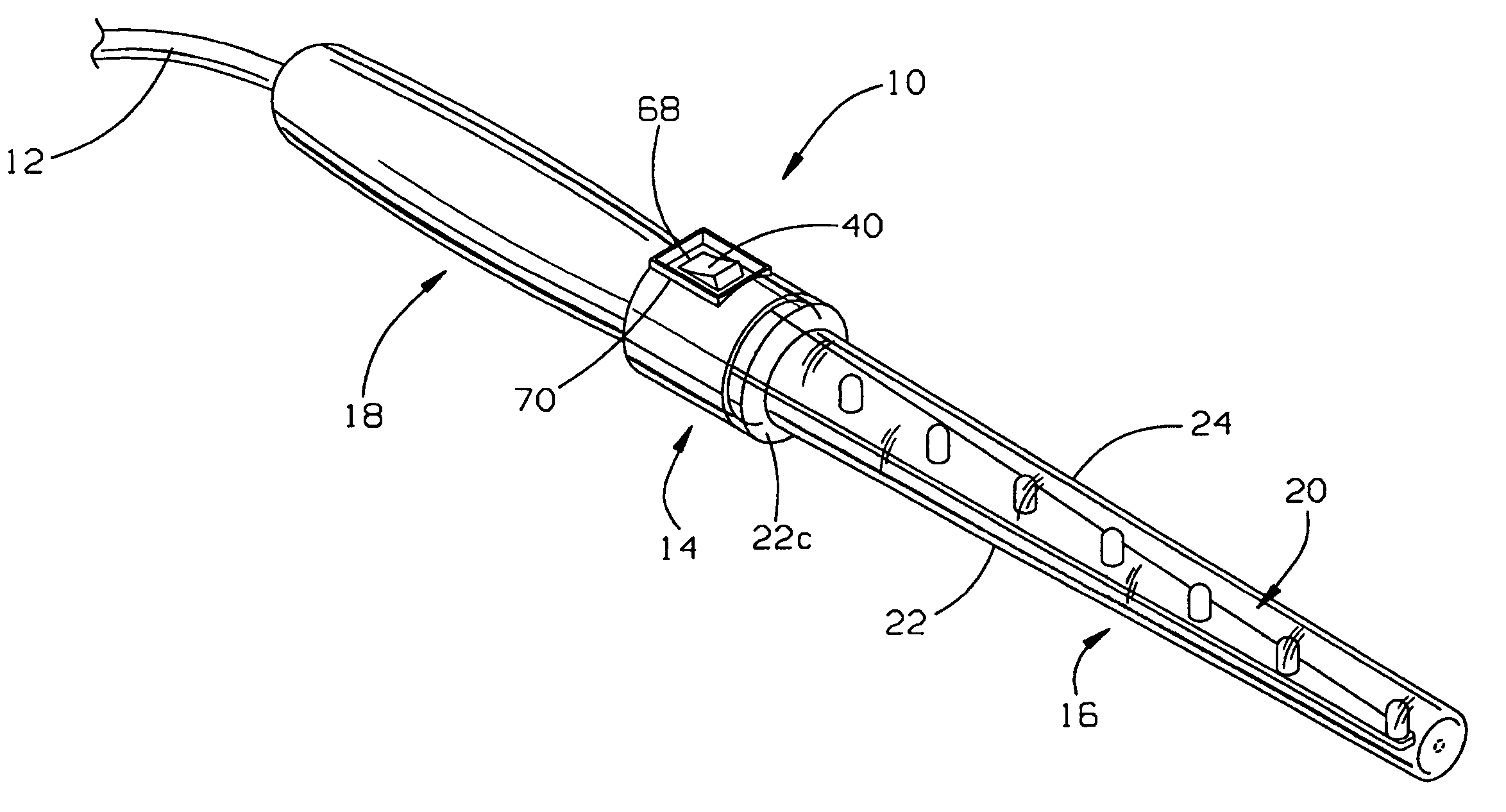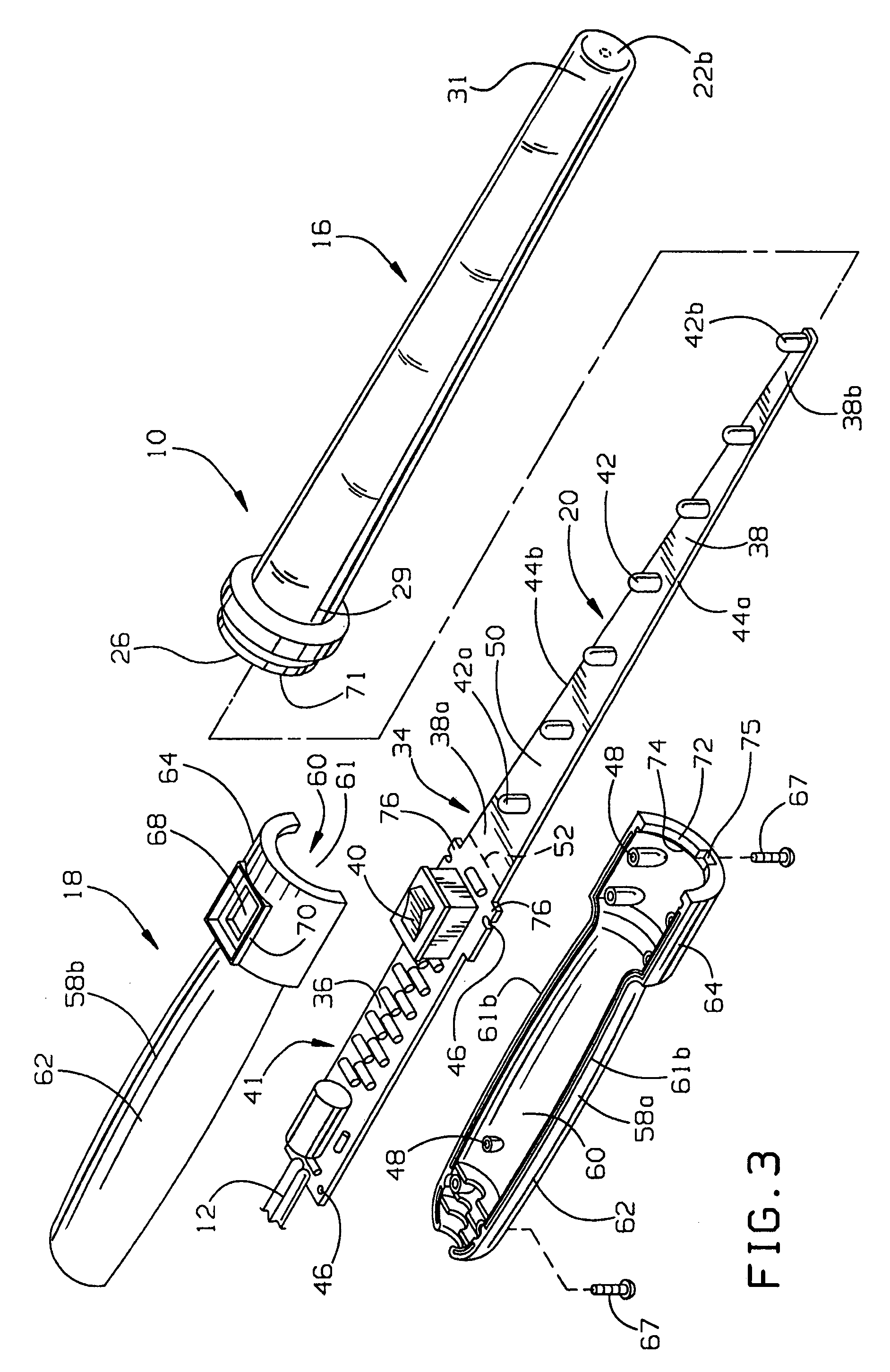Work light
a work light and light head technology, applied in the field of led work lights, can solve the problems of weakening the light head, affecting the light head, and compromising the strength of such two-piece light heads, and achieves the effects of high strength, easy impact resistance, and high strength
- Summary
- Abstract
- Description
- Claims
- Application Information
AI Technical Summary
Benefits of technology
Problems solved by technology
Method used
Image
Examples
Embodiment Construction
[0039]In FIGS. 1 and 2, an LED work light 10 is shown that is provided with a high-strength construction in accordance with the present invention. The light 10 may be powered from a standard 110 volt wall outlet through a cord 12 plugged into the outlet in a known manner. Battery powered and combination units providing options in terms of powering the light device with either power from a wall outlet or a battery are also contemplated. The batteries can be rechargeable. Further, the cord 12 can be provided with a connector that allows it to be plugged into a typical cigarette lighter in a vehicle to be powered by the electrical power source thereof. In this regard, the power cord 12 can be provided in different lengths on different light units 10 such as with a twenty foot length for automobiles or a forty foot length for trucks.
[0040]In general, the light 10 includes a high-strength, elongate body 14 including an elongate, light head 15 having a substantially light-transmissive por...
PUM
 Login to View More
Login to View More Abstract
Description
Claims
Application Information
 Login to View More
Login to View More - Generate Ideas
- Intellectual Property
- Life Sciences
- Materials
- Tech Scout
- Unparalleled Data Quality
- Higher Quality Content
- 60% Fewer Hallucinations
Browse by: Latest US Patents, China's latest patents, Technical Efficacy Thesaurus, Application Domain, Technology Topic, Popular Technical Reports.
© 2025 PatSnap. All rights reserved.Legal|Privacy policy|Modern Slavery Act Transparency Statement|Sitemap|About US| Contact US: help@patsnap.com



